Mana rocks are pretty common in Magic. They’re present in nearly every set, and they vary significantly in quality. Some might be format staples while others are completely unplayable, but some players may have trouble evaluating the rocks that lie in the middle.
The most important element of your mana rocks is where they sit on your curve. Most decks will want their ramp to have a low mana value so they can cast it early in the game. Decks that are particularly mana-hungry, however, might want expensive rocks that produce more mana. In general, a mana value of two or less is the sweet spot for mana rocks, and there are plenty of options in this range that can provide two or more mana at once.
It can be difficult to know when you should run mana rocks, as well as which ones are worth running. Luckily, I’ve compiled some guiding principles for putting mana rocks in your deck, as well as some of the strongest mana rocks for both expensive decks and budget builds.
Why Should I Run Mana Rocks?
Mana rocks typically see play in decks that want mana acceleration or, to a lesser extent, color fixing. Those reasons may sound fairly obvious, but identifying when a specific deck wants them can be tricky. As an example, let’s look at the Guilds of Ravnica limited format.
Example: Guilds of Ravnica Limited
In Guilds of Ravnica limited, one of the strongest cards was Niv-Mizzet, Parun. It had the potential to completely take over the game, but it was a six-drop with very strict mana requirements. Whenever I was lucky enough to be running Niv-Mizzet, I was able to find space in my deck for one or two copies of Izzet Locket.
As another example, I also liked running Inescapable Blaze as a finishing burn spell for my Boros decks. It costs six mana, just like Niv, but it usually wasn’t a good idea to play Boros Locket alongside it.
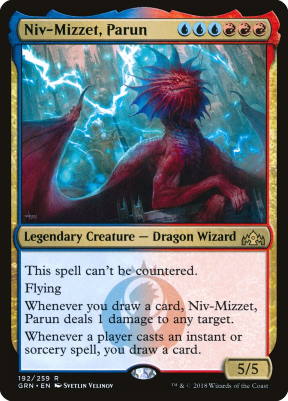
What’s the Difference?
First, decks that ran Niv-Mizzet were likely control decks that wanted to prepare for a winning endgame. Spending an early turn to set up an impactful creature like Niv-Mizzet, Parun certainly lines up with that strategy.
On the other hand, Boros decks were trying to curve out with aggressive creatures. They would much rather play Skyknight Legionnaire or Wojek Bodyguard than take a turn off by playing a rock.
Second, Niv-Mizzet was a difficult spell to cast with a limited mana base. Having an extra card that could add U or R went a long way in consistently casting Niv-Mizzet. Compared to UUURRR, Inescapable Blaze had a pretty easy casting cost. By the time you had six lands out, it was fairly likely that two of them could produce red mana.
As you can see, the strategy and composition of your deck plays a big role in whether or not you want mana rocks. This will also vary depending on your format. For example, Commander decks almost always have at least some form of mana acceleration. Still, the curve of your deck and the speed at which you’re trying to win will determine just how many you want.
How Many Mana Rocks Should I Run?
Once you’ve decided that your deck wants mana rocks, you need to determine how many you should include. As previously mentioned, this question is especially important in Commander. Mana acceleration is a key factor in deckbuilding, but how much is really necessary? And how much of your ramp should be mana rocks?
RELATED: 5 Common Commander Deckbuilding Mistakes
How Much Ramp Should I Have?
A commonly understood baseline in Commander is that ten ramp spells is a good starting point, but not every deck should have exactly ten sources of ramp. If your curve is low enough, you can afford to cut one or two sources. If you do decide to cut ramp, be careful. Going any lower than eight can leave you without enough mana to keep up with the other players. It’s much more likely that you’ll want to go above ten sources.
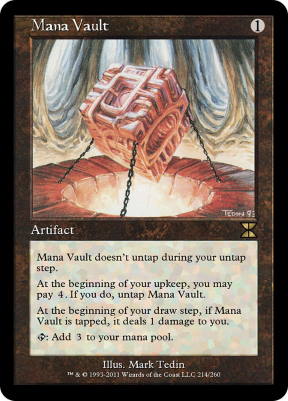
There are plenty of archetypes in EDH that want more than ten sources of ramp. Certain tribes like dragons or demons feature expensive creatures, and strategies such as X-spells use all the mana they can get. Having extra mana not only makes it easier to cast big spells, but also makes it easier to cast multiple big spells in the same turn.
Decks that consistently draw lots of cards can also be hungry for more mana. If you find that you usually have a full grip, consider adding more ramp to your deck. More mana lets you cast those cards earlier, and playing multiple spells in a turn will give you an advantage over your opponents.
When Should I Include Mana Rocks?
These principles all apply to ramp in general, but when is it best to run them specifically? Some colors may not have access to much ramp besides artifacts, while others are spoiled for choice. If you’re playing green, for example, you could be running land ramp, mana dorks, rocks, or aura-based ramp. So when should you choose one type of ramp over the other?
The key here is to determine what kind of ramp synergizes with your deck. Even if you can only find marginal synergy, that can make a big difference in the right situation. Obviously, mana rocks are likely the best choice for decks that want a high volume of artifacts. From here, we can get even more specific.
If your deck is running Marionette Master, then Mind Stone and Hedron Archive are excellent choices. Sacrificing these rocks triggers Marionette Master in addition to giving you extra cards. This type of synergy can turn your deck into a well-oiled machine. Decks that run Korvold, Fae-Cursed King or Mayhem Devil could also benefit from sacrificing these rocks.
Whenever you can fine-tune your decks with these small synergies, take advantage of it. You shouldn’t completely change your deck’s ramp just to work with one card, but these synergies can serve as good tiebreakers between comparable options.
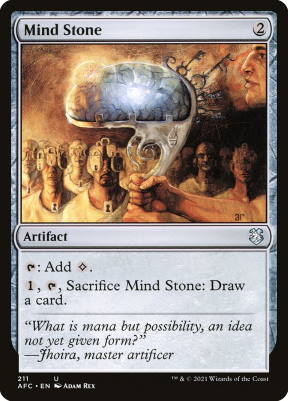
How Do I Evaluate Mana Rocks?
Of course, you shouldn’t just be throwing any ones you can into your deck. Their quality varies from broken to unplayable, so it’s important to know how to evaluate them. The best mana rocks will either be very efficient or have a secondary effect that makes them worth running.
Efficiency
As a general rule, your rocks should produce at least half the mana you spent to cast them. This means that your two-cost rocks should tap for one mana, your four-cost rocks should tap for two, and so on. For rocks with an odd cost, you’ll typically want to get half of their mana value rounded up.
Let’s look at two mana rocks that we’ve already discussed: Izzet Locket and Mind Stone. Both tap for one mana and can be sacrificed to draw cards, but Mind Stone is much more efficient than Izzet Locket.
Izzet Locket costs one extra mana, but it still only taps for one. You would also need to spend four mana to draw two cards, which isn’t an efficient rate at all. As a result, Mind Stone is a much stronger choice. It’s a two-cost rock with a cheap, useful ability, and that’s often exactly the type of ramp that will make your deck more powerful.
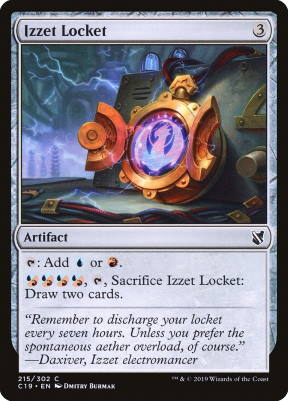
Powerful Effects
Not all three-cost rocks have to tap for two, though. Recently, WOTC has experimented with giving powerful effects to mana rocks that would otherwise be inefficient.
Cursed Mirror, for example, can copy the best creature on the
Safety
Finally, cheaper mana rocks are typically safer to play than expensive ones. While cards like Thran Dynamo and Gilded Lotus can provide you with a ton of mana, they’re also easy targets for removal.
Spending one removal spell to deny your opponent three mana every turn is a great deal, and you can open yourself up to getting blown out if you have too many high-value mana rocks in your deck. If you had to invest four, five, or even more mana just to cast the card, you also would’ve wasted quite a few resources. Spending that much mana on a set-up just to have it gone by the end of the turn cycle is a terrible feeling, so I try to avoid these cards in most decks.
Two-cost mana rocks produce less mana, so it’s less enticing for your opponents to spend a whole card to remove them. They also come into play earlier in the game, so you get an advantage faster than if you were stuck with more expensive ones. Of course, some decks will still want rocks that cost four or more, but unless your deck really wants a lot of mana it’s safer and more efficient to focus on two-cost mana rocks.
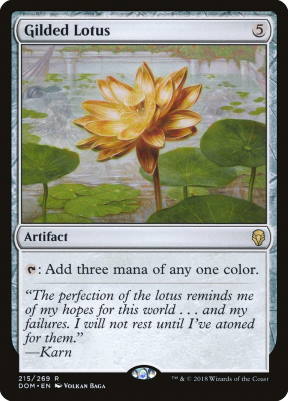
What are the Best Mana Rocks?
The best mana rocks are the ones that give you the most mana for the lowest cost, often times for free. Some also produce colorless mana, so they can go into any deck. Given their efficiency and versatility, these rocks often fetch a high price, but they’re absolutely worth it if they fit into your budget.
Without question, Black Lotus and the five moxen are the best mana rocks ever printed, but they aren’t exactly easy to come by. Few formats even allow these cards to be played, and the same is true for Lion’s Eye Diamond. Their power level is unquestionable, but it’s not often you can just slot these into a deck.
Mana Crypt and Mana Vault are two rocks that can quickly accelerate your game plan, but they’ll damage you in the process. Mana Crypt will consistently give you mana but randomly deal three damage to you, while Mana Vault slowly pings you for each turn that it’s tapped. Both are strong options, especially in Commander where your life total is so high that the extra mana far outweighs a bit of damage.
Grim Monolith and Basalt Monolith can also output a ton of extra mana. Similarly to Mana Vault, though, they require you to invest more into them to keep getting that advantage. It’s also important to note that these rocks can go infinite quite easily. With cards like Rings of Brighthearth, you can net mana by tapping and untapping these rocks, creating infinite colorless mana in the process.
RELATED: MTG Infinite Combos: An Ultimate Guide
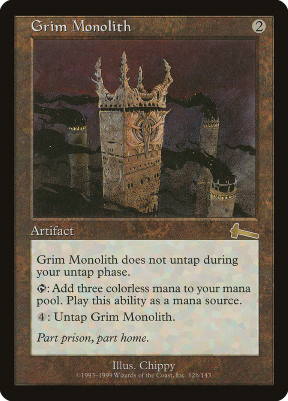
The 10 Best Mana Rocks
10. Arcane Signet
9. Mana Vault
8. The Great Henge
7. Sol Ring
6. Basalt Monolith
5. Grim Monolith
4. Mana Crypt
3. Lion’s Eye Diamond
2. Moxen
1. Black Lotus
What are the Best Budget Mana Rocks?
Thankfully, you don’t have to break the bank just to find decent ramp. There are excellent budget mana rocks that can work well in your deck and accelerate your game.
It’s worth mentioning that some of the best budget mana rocks are also the best two-cost mana rocks. The signets and talismans are both fantastic cycles that are rather cheap. In fact, these are some of my first inclusions into just about any EDH deck’s ramp package. Another great cycle are the five diamonds, which all enter the battlefield tapped but provide colored mana.
There are plenty of other cheap two-cost mana rocks as well. Arcane Signet, Mind Stone, and Fellwar Stone are all great options that can go into any deck. In general, any two-cost rock that taps for one will probably play just fine.
While there are some budget mana rocks that will perform well, there are also some you should stay away from. There are lots of mana rock cycles that cost three and tap for one, and you’ll rarely put any of them in your deck, even in limited. These include the lockets, cluestones, keyrunes, and so on. You want efficiency from your ramp more than anything else, and these cycles don’t provide that.
Lastly, Sol Ring is the best budget mana rock by a long shot. Since it’s reprinted in every Commander product, it never costs more than a couple of bucks. The efficiency of paying one mana to get two every turn with no drawbacks makes it one of the best mana rocks of all time. It’s practically an auto-include in every Commander deck, and rightfully so.
The 10 Best Budget Mana Rocks
10. Diamonds
9. Worn Powerstone
8. Liquimetal Torque
7. Everflowing Chalice
6. Mind Stone
5. Fellwar Stone
4. Signets
3. Talismans
2. Arcane Signet
1. Sol Ring
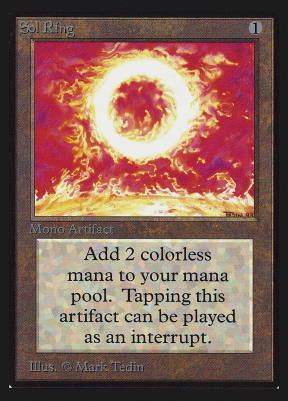
Conclusion
Mana rocks can serve an important role in your deck so long as you know when to include them. Using the best mana rocks for your deck’s particular strategy is key to getting the most from your ramp.
There are also plenty of budget mana rocks that will be highly effective, so don’t feel the need to spend hundreds of dollars on your ramp package. Keep these tips in mind, and your rocks will ramp you into more wins.
